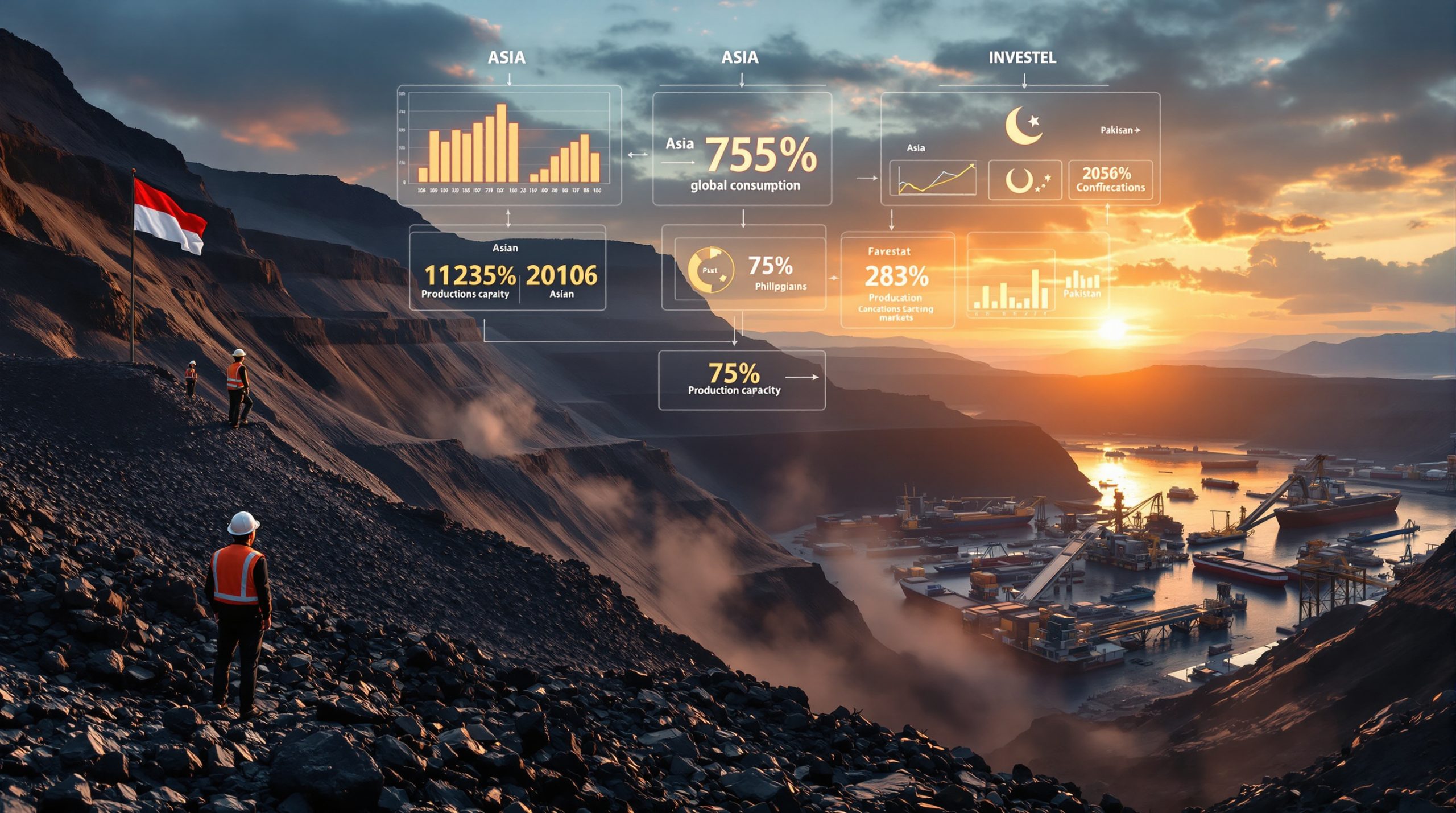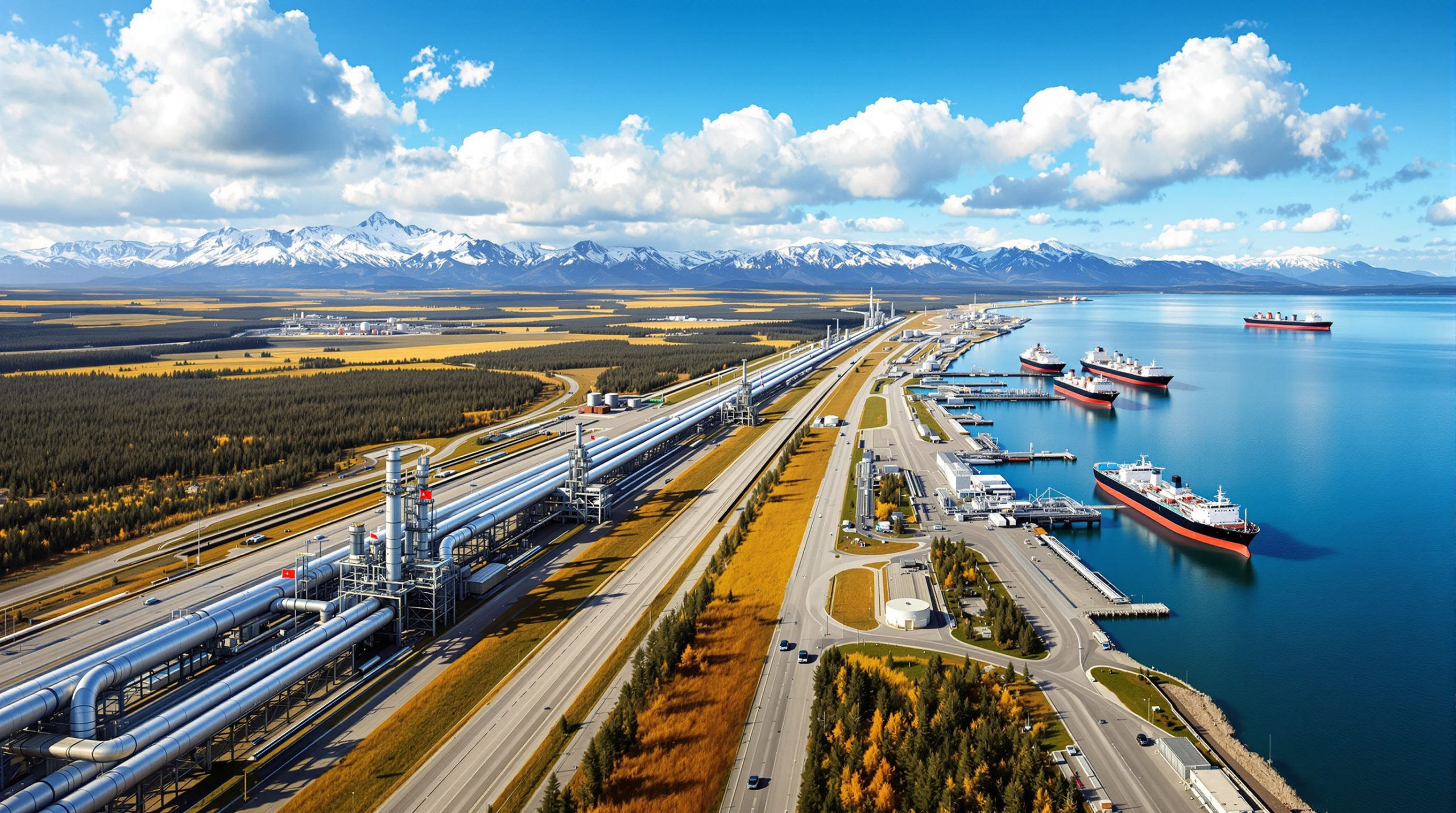What Is Driving Codelco's Recent Copper Production Growth?
Codelco, Chile's state-owned mining giant, has demonstrated remarkable resilience with its March 2025 copper production figures showing a significant upturn. After navigating through operational challenges in previous quarters, the company has emerged with renewed strength, reinforcing its position as the world's premier copper producer.
March 2025 Production Highlights
Codelco's copper output reached an impressive 123,200 metric tons in March 2025, marking a substantial 15% year-over-year increase compared to March 2024. This production milestone represents the company's strongest monthly performance in over two years, effectively reversing a concerning trend of declining output that had plagued the mining behemoth.
The production surge comes at a critical time for global copper markets, which have experienced supply constraints amid growing surging copper demand from renewable energy and electric vehicle sectors. Codelco's increased output provides a welcome boost to global copper availability, potentially easing some market tensions.
This performance is particularly noteworthy given the challenges faced by other major Chilean copper operations. While Codelco's production climbed, the contrast with Collahuasi's significant production drop highlights the different operational trajectories within Chile's mining landscape.
Key Factors Behind Production Improvement
Several strategic initiatives appear to have contributed to Codelco's production revival. The company has implemented comprehensive operational efficiency programs across its mining divisions, with particular success at the Chuquicamata and El Teniente complexes. Enhanced maintenance protocols have reduced unplanned downtime, allowing for more consistent extraction rates throughout the quarter.
Investment in mine development has also paid dividends, with improved access to higher-grade ore bodies contributing to better recovery rates. Codelco has strategically prioritized high-yield zones within its vast mineral concessions, maximizing output from areas with favorable copper concentrations.
The company's recovery from previous production challenges demonstrates effective problem-solving at both technical and management levels. Labor relations have stabilized following agreements reached with unions in late 2024, preventing the work stoppages that had hampered production in previous years.
Weather conditions in northern Chile have also been favorable, supporting uninterrupted extraction activities across Codelco's open-pit operations. This environmental stability, combined with internal operational improvements, has created optimal conditions for the production increase observed in March.
How Does Codelco's Performance Compare to Other Major Copper Producers?
The competitive landscape of Chilean copper production reveals fascinating dynamics when examining March 2025 figures across the country's major operations. Codelco's performance must be contextualized against its primary competitors to fully appreciate the significance of its recent production gains.
Escondida Mine Production Analysis
BHP's Escondida mine, the world's largest single copper operation, achieved production of 120,600 tons in March 2025, representing an impressive 19% year-over-year increase. This substantial growth rate actually exceeds Codelco's percentage increase, though Codelco's absolute production remains higher by approximately 2,600 tons.
Escondida's production surge can be partially attributed to the completion of its $1.2 billion desalination infrastructure project, which has effectively addressed water supply constraints in the arid Atacama region. This investment has proven timely, allowing the mine to operate at higher capacity despite the region's persistent drought conditions.
The narrowing production gap between Escondida and Codelco highlights the increasingly competitive nature of Chile's copper sector. While Codelco operates multiple mines across the country, Escondida's single-site production approaching Codelco's total output demonstrates the remarkable efficiency of BHP's flagship operation.
Despite declining average ore grades at Escondida (now approximately 0.65% copper content), technological innovations in mineral processing have enabled the operation to maintain impressive production levels. Sensor-based sorting systems and enhanced heap leaching techniques have improved recovery rates from lower-grade material.
Collahuasi Mine Output Challenges
In stark contrast to the success stories of Codelco and Escondida, the Collahuasi mine experienced a troubling decline in March 2025 production. Output plummeted to 35,200 tons, representing a dramatic 29% decrease compared to March 2024 figures.
This joint venture between Glencore and Anglo American (each holding 44% stakes) has encountered significant operational setbacks, including the aftermath of a damaging landslide in Q4 2024 that disrupted access routes and transportation infrastructure. Recovery efforts have progressed more slowly than anticipated, continuing to limit production capacity.
Labor relations have added another layer of complexity to Collahuasi's challenges. Union negotiations have proven contentious, with worker representatives demanding compensation increases proportional to record copper prices. These tensions have resulted in sporadic work slowdowns, further impacting production continuity.
Technical issues have compounded these difficulties, with processing facilities reporting recovery rate declines of approximately 12% due to increasingly complex ore mineralogy. The harder rock composition has necessitated adjustments to grinding circuits, reducing throughput and increasing energy consumption.
Water management challenges have also affected Collahuasi's operations, with the mine's high-altitude location (4,400 meters above sea level) creating unique logistical hurdles for resource allocation. Investment in water recycling infrastructure has not yet delivered the anticipated efficiency improvements.
What Is the Current State of Chile's Copper Industry?
Chile maintains its position as the epicenter of global copper production, though the industry faces both opportunities and challenges as it navigates changing market conditions, resource constraints, and environmental considerations.
Chile's Role in Global Copper Production
Chile continues to dominate the world copper landscape, accounting for approximately 27% of global production. The nation's massive copper endowment, estimated at 190 million metric tons of reserves, ensures its continued significance in international markets for decades to come.
The combined output from Chile's three major mining operations—Codelco, Escondida, and Collahuasi—represents a substantial portion of global copper investment supply, highlighting the country's outsized influence on market dynamics. Despite rising competition from emerging copper regions in Africa and Central Asia, Chile's established infrastructure and technical expertise maintain its competitive advantage.
Chile's copper industry directly employs over 200,000 workers and indirectly supports hundreds of thousands of additional jobs throughout the supply chain. The sector's economic importance extends far beyond direct production value, influencing everything from regional development to national fiscal policy.
However, Chile's copper dominance faces growing challenges from declining ore grades, which have fallen from an average of 0.83% in 2010 to approximately 0.58% in 2025. This gradual deterioration in resource quality necessitates more energy-intensive extraction and processing methods, affecting both production costs and environmental footprint.
Production Trends and Patterns
Chile's copper output showed encouraging signs in Q1 2025, with production growing 6.7% compared to the previous quarter, reversing the 4.3% contraction observed throughout 2024. This recovery trend provides cautious optimism for the sector's near-term prospects.
Monthly production data reveals typical seasonal patterns, with March marking the end of Chile's high-productivity summer period. Historically, output tends to decrease moderately during the June-August winter months when precipitation in central Chile can affect mining operations.
Quarterly performance comparisons indicate that while production growth has resumed, efficiency metrics show room for improvement. The persistent 9% gap between projected and actual output across major Chilean mines suggests structural constraints that remain unresolved, including permitting delays for critical infrastructure expansion.
Looking at longer-term patterns, Chile's copper industry appears to be entering a period of modest but sustainable growth after several years of stagnation. Investment in modern mine planning and operational efficiency is gradually bearing fruit, though the pace of improvement varies significantly between mining companies.
How Might Codelco's Production Increase Impact the Copper Market?
The resurgence in Codelco's production capacity has potential ripple effects throughout global copper markets, influencing everything from price dynamics to investment decisions in mining projects worldwide.
Supply and Demand Implications
Codelco's production surge adds approximately 148,000 metric tons on an annualized basis to global copper supply, potentially alleviating some pressure in a market facing a projected 520,000-ton deficit for 2025. This additional volume represents about 28% of the anticipated global shortfall.
Market response to production increases tends to be nuanced, with futures prices continuing to fluctuate between $9,800 and $10,200 per ton during April 2025. This price resilience suggests that demand fundamentals remain robust despite incremental supply improvements from major producers.
The relationship between production growth and physical market availability is complicated by bottlenecks in the refining sector. Chinese smelters, which process approximately 43% of global copper concentrate, are operating at 83% capacity utilization due to persistent raw material shortages and environmental restrictions.
Inventory levels at major exchanges provide another perspective on market balance. LME warehouses held approximately 175,000 tons of copper cathode in April 2025, representing just 2.8 days of global consumption—historically low levels that continue to support elevated price environments despite production increases.
Industry Outlook and Projections
Copper demand growth projections remain strong, with the World Bank forecasting a 3.4% increase for 2025, driven primarily by electrification trends. Electric vehicle production alone is expected to require 2.8 million tons of copper annually by 2026, creating sustained pressure on supply chains.
Codelco has announced ambitious plans to maintain annual production of approximately 1.6 million tons through 2030, supported by a $7 billion investment program focused on extending mine life and improving operational efficiency. The Rajo Inca project at Salvador Division represents a cornerstone of this strategy, expected to contribute 90,000 tons annually when fully operational.
Long-term production sustainability faces challenges from declining ore grades across Codelco's mature mining districts. The average copper content in processed ore has fallen by approximately 30% over the past two decades, requiring technological innovation to maintain economic viability.
The outlook for Chile's broader copper sector combines cautious optimism with recognition of structural challenges. While production growth appears achievable in the near term, environmental constraints—particularly water availability and emissions requirements—may limit expansion potential beyond 2030 without transformative technological breakthroughs.
What Challenges Does Codelco Face Despite Production Growth?
While Codelco's recent production performance demonstrates resilience, the company confronts multiple challenges that could threaten the sustainability of its growth trajectory. From aging infrastructure to economic pressures, these obstacles require strategic management for long-term success.
Operational Hurdles
Codelco's aging mine infrastructure presents significant challenges, with many facilities operating well beyond their initial design lifespans. The company's average mine age of 73 years necessitates approximately $3.2 billion annually in maintenance investments merely to prevent operational degradation.
"Codelco faces the most complex technical mining challenges in Chile, operating some of the world's oldest large-scale copper mines. Their engineering solutions often become industry standards for mature mining operations globally." – Mining Engineering Quarterly
Water scarcity remains a critical constraint, particularly for Codelco's operations in central Chile. The Andina Division's reservoir levels stand at just 54% of capacity despite significant investments in water recycling infrastructure. Climate change projections suggest this situation may worsen, with the central Andes expected to experience 15-25% less precipitation by 2040.
Environmental compliance requirements have become increasingly stringent under Chile's updated mining regulations. Codelco faces a 2026 deadline to modernize 12 smelter furnaces to meet tightened emissions standards, a project estimated to cost $950 million. Failure to comply could result in production curtailments at affected sites.
Resource depletion in mature mining districts requires deeper excavation, with some underground operations now extending more than 1,000 meters below surface level. These depths create challenging geotechnical conditions, including higher rock temperatures and increased seismic risk that necessitate specialized mining techniques and equipment.
Economic and Market Pressures
Despite impressive production figures, Codelco's cost structure remains concerning. Cash costs averaged $2.18 per pound in Q1 2025—approximately 42% higher than Escondida's $1.54 per pound. This cost differential primarily stems from lower ore grades, deeper mining requirements, and higher labor expenses.
Capital investment needs create significant financial pressure. Codelco requires an estimated $21 billion through 2040 to maintain production levels, yet the company's debt-to-EBITDA ratio reached 4.1x in Q1 2025, limiting borrowing capacity. Government funding remains essential but uncertain amid competing national priorities.
Competition from emerging copper regions presents another challenge. The Kamoa-Kakula complex in the Democratic Republic of Congo is projected to produce 920,000 tons in 2025, with significantly lower operating costs due to exceptional ore grades exceeding 4% copper content in some zones—nearly seven times the average grade of Chilean deposits.
Market price volatility introduces additional complexity to Codelco's planning processes. While copper price prediction trends have remained generally favorable, fluctuations of $1,500-2,000 per ton within single quarters complicate investment decisions and cash flow management for projects with decade-long development timelines.
FAQ About Codelco and Chile's Copper Production
What is Codelco's significance in the global copper market?
Codelco is the world's largest copper producer, a state-owned Chilean mining company that controls approximately 10% of global copper reserves. Its production levels significantly influence global copper supply and pricing dynamics, with its annual output of roughly 1.6 million tons representing about 8% of worldwide copper production.
The company operates seven mining divisions across Chile, including some of the world's largest copper mines such as Chuquicamata, El Teniente, and Radomiro Tomic. These operations encompass both open-pit and underground mining methods, processing a diverse range of ore types through various metallurgical routes.
Codelco's production decisions have outsized impact on copper market sentiment due to its role as a bellwether for industry trends. Analysts closely monitor the company's quarterly production reports for insights into broader supply conditions and technical challenges facing major producers.
As a state-owned enterprise, Codelco also serves political and social objectives beyond profit maximization. The company contributes approximately $7-10 billion annually to the Chilean treasury, funding critical government programs in education, healthcare, and infrastructure development.
How does copper production impact Chile's economy?
Copper exports represent approximately 12% of Chile's GDP and over 58% of its export revenue, making production fluctuations critically important to the nation's economic health and fiscal stability. Each $0.10 per pound change in copper prices alters Chile's fiscal revenues by approximately $1.3 billion annually.
The mining sector directly employs about 200,000 Chilean workers, with copper operations accounting for roughly 150,000 of these positions. Including indirect employment through suppliers and service providers, copper's total employment impact exceeds 500,000 jobs—nearly 6% of Chile's workforce.
Chile's currency, the peso, demonstrates strong correlation with copper price movements, creating macroeconomic ripple effects throughout the economy. When copper prices strengthen, the peso typically appreciates, affecting everything from import costs to inflation rates and interest rate policies.
The government has established sovereign wealth mechanisms to manage copper revenue volatility, including the Economic and Social Stabilization Fund, which had assets of approximately $8.7 billion as of March 2025. These funds help buffer the national budget from commodity price fluctuations.
What factors typically affect copper production levels?
Ore grade variations significantly impact production output, with even small changes in copper content (measured as percentage by weight) having substantial effects on recoverable metal. Chile's average copper grade has declined from 1.2% in the 1990s to approximately 0.58% today, requiring processing of larger ore volumes to maintain metal production.
Operational efficiency factors, including equipment availability, maintenance practices, and process optimization, can influence production by 15-20%. Unexpected equipment failures, particularly in critical systems like grinding mills or conveyor networks, can reduce monthly output by thousands of tons.
"The mining industry operates at the intersection of geology, engineering, and logistics. When all three align perfectly, production thrives. When any one element falters, the impacts cascade throughout the operation." – Journal of Mining Economics
Labor relations and workforce stability play crucial roles in maintaining consistent production. Chile's mining unions have significant influence, with major strikes capable of reducing national copper output by 20% or more, as demonstrated during the 45-day Escondida strike in 2017.
Weather events increasingly affect production reliability, with extreme rainfall in the Atacama Desert and snowstorms in the Andes mountains disrupting operations more frequently than historical norms. Climate change modeling suggests these disruptive events may increase in both frequency and intensity.
How are major copper producers addressing sustainability concerns?
Leading producers are implementing comprehensive water management strategies, with Codelco achieving 85% water recycling rates at its newest operations through closed-circuit designs and evaporation controls. Desalination capacity serving Chilean mining has expanded from 0.5 cubic meters per second in 2010 to approximately 5.5 cubic meters per second in 2025.
Renewable energy integration has accelerated, with major mines signing long-term power purchase agreements with solar and wind providers. Escondida now sources approximately 80% of its electricity from renewable resources, reducing both carbon emissions and operating costs through predictable energy pricing.
Community engagement programs have evolved from simple compensation models to comprehensive shared value approaches. Codelco allocates approximately 1% of annual revenues to local development initiatives, including education, entrepreneurship
Want to Know When the Next Major Copper Discovery Happens?
Stay ahead of the market with Discovery Alert's proprietary Discovery IQ model, which instantly notifies you of significant ASX mineral discoveries and translates complex data into actionable investment insights. Visit our discoveries page to see how early detection of major copper finds like Codelco's could deliver substantial returns, and begin your 30-day free trial today.




